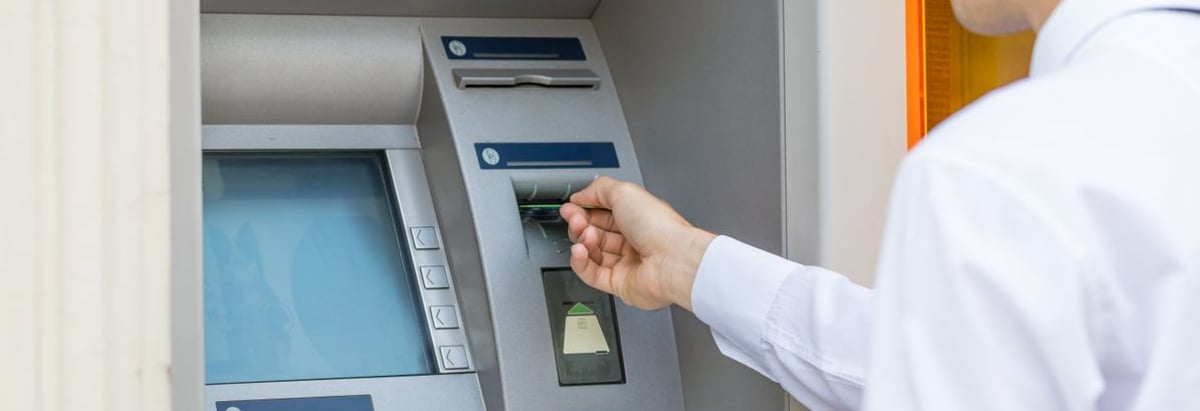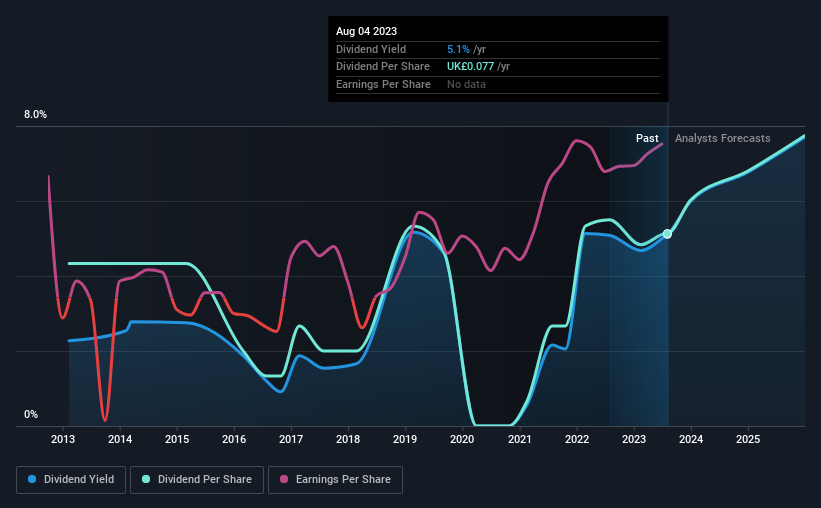Stock Analysis
- United Kingdom
- /
- Banks
- /
- LSE:BARC
Why You Might Be Interested In Barclays PLC (LON:BARC) For Its Upcoming Dividend

Barclays PLC (LON:BARC) is about to trade ex-dividend in the next 4 days. Typically, the ex-dividend date is one business day before the record date which is the date on which a company determines the shareholders eligible to receive a dividend. It is important to be aware of the ex-dividend date because any trade on the stock needs to have been settled on or before the record date. Meaning, you will need to purchase Barclays' shares before the 10th of August to receive the dividend, which will be paid on the 15th of September.
The company's next dividend payment will be UK£0.027 per share, and in the last 12 months, the company paid a total of UK£0.077 per share. Looking at the last 12 months of distributions, Barclays has a trailing yield of approximately 5.1% on its current stock price of £1.5074. We love seeing companies pay a dividend, but it's also important to be sure that laying the golden eggs isn't going to kill our golden goose! That's why we should always check whether the dividend payments appear sustainable, and if the company is growing.
View our latest analysis for Barclays
Dividends are typically paid from company earnings. If a company pays more in dividends than it earned in profit, then the dividend could be unsustainable. Barclays has a low and conservative payout ratio of just 22% of its income after tax.
Generally speaking, the lower a company's payout ratios, the more resilient its dividend usually is.
Click here to see the company's payout ratio, plus analyst estimates of its future dividends.

Have Earnings And Dividends Been Growing?
Businesses with strong growth prospects usually make the best dividend payers, because it's easier to grow dividends when earnings per share are improving. If earnings fall far enough, the company could be forced to cut its dividend. It's encouraging to see Barclays has grown its earnings rapidly, up 60% a year for the past five years.
Another key way to measure a company's dividend prospects is by measuring its historical rate of dividend growth. In the past 10 years, Barclays has increased its dividend at approximately 1.7% a year on average. Earnings per share have been growing much quicker than dividends, potentially because Barclays is keeping back more of its profits to grow the business.
To Sum It Up
Has Barclays got what it takes to maintain its dividend payments? Typically, companies that are growing rapidly and paying out a low fraction of earnings are keeping the profits for reinvestment in the business. Perhaps even more importantly - this can sometimes signal management is focused on the long term future of the business. Overall, Barclays looks like a promising dividend stock in this analysis, and we think it would be worth investigating further.
So while Barclays looks good from a dividend perspective, it's always worthwhile being up to date with the risks involved in this stock. Our analysis shows 2 warning signs for Barclays that we strongly recommend you have a look at before investing in the company.
If you're in the market for strong dividend payers, we recommend checking our selection of top dividend stocks.
Valuation is complex, but we're helping make it simple.
Find out whether Barclays is potentially over or undervalued by checking out our comprehensive analysis, which includes fair value estimates, risks and warnings, dividends, insider transactions and financial health.
View the Free AnalysisHave feedback on this article? Concerned about the content? Get in touch with us directly. Alternatively, email editorial-team (at) simplywallst.com.
This article by Simply Wall St is general in nature. We provide commentary based on historical data and analyst forecasts only using an unbiased methodology and our articles are not intended to be financial advice. It does not constitute a recommendation to buy or sell any stock, and does not take account of your objectives, or your financial situation. We aim to bring you long-term focused analysis driven by fundamental data. Note that our analysis may not factor in the latest price-sensitive company announcements or qualitative material. Simply Wall St has no position in any stocks mentioned.
About LSE:BARC
Barclays
Provides various financial services in the United Kingdom, Europe, the Americas, Africa, the Middle East, and Asia.
Average dividend payer and slightly overvalued.

